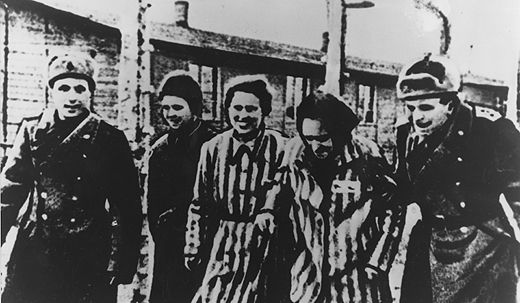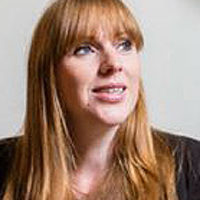
Today, on International Holocaust Remembrance Day, a commemoration is taking place at Auschwitz, which was liberated exactly 70 years ago.
Many countries will be represented by their highest-ranking politicians – in the case of France and Germany by Presidents Francois Hollande and Joachim Gauk respectively. The U.S. sent a delegation led by Treasury Secretary Jack Lew.
Britain will be represented by Eric Pickles, Secretary of State for Communities and Local Government. Last week I visited Auschwitz-Birkenau as part of a study tour, and arrangements for the commemoration event were well-advanced. A massive marquee has been erected incorporating the “death gate” at Birkenau, where world leaders will be joined by 300 Auschwitz survivors and a high level of security in place.
The scale of the camp – chosen because of its location at the centre of German-occupied Europe – is breathtaking, and the inhumanity of the conditions in which prisoners were detained is palpable when visiting the preserved camp buildings.
I was profoundly moved by the conditions of the brick barracks in which children and women were incarcerated. Built on swampy ground without foundations, women slept on overcrowded three-tier berths spread over with rotting straw. Sanitary conditions were unspeakable.
It is estimated that 1.3 million people were killed at the Auschwitz extermination camp, of which 90 per cent were Jews.
The belongings, biographies and photographs of victims displayed at the museums across the site are profound reminders of the inhumanity of the Nazi Holocaust and the ideology which underpins it.
The ruins of the crematoria and gas chambers are reminders of its depravity.
The camp’s international monument to the victims of fascism reminds us that citizens of many countries were deported to Auschwitz. Initially in 1940 prisoners came from Poland but over time people from all over Europe were imprisoned – mainly Hungarian and Polish Jews, but also Soviet prisoners of war, political prisoners, Roma, gay people and Jehovah’s Witnesses.
The camps were built using the slave labor of prisoners who were also deployed to work in nearby factories and mines for 12-hour shifts before returning each day through the iconic “Arbeit Macht Frei” (work sets you free) gates to sleep in appalling surroundings.
This was my second visit to Auschwitz-Birkenau.
My previous visit was in 2003 and I couldn’t help but notice the increased commercialism and tourism related to the Holocaust era in the Krakow region.
Oskar Schindler’s Enamel Factory has been developed beyond recognition into a permanent exhibition of Krakow under Nazi occupation and its high-tech displays contrast with the under-maintained monument site of the nearby Plaszow concentration camp.
On the main Auschwitz site, new permanent exhibitions have been installed by the Russian Federation (Tragedy. Bravery. Liberation) and Israel’s Yad Vashem Holocaust Memorial (Shoah).
The recent controversies surrounding the 70th anniversary, particularly the remark of the Polish Foreign Minister that it was “Ukrainians and not Russians” which liberated Auschwitz, demonstrate the pervasive impact of contemporary politics on historical narratives.
As Norman G. Finkelstein writes in his seminal book The Holocaust Industry, it is important to fight for and preserve the integrity of the historical record.
There is no better way to understand the true nature of the Nazi genocide than to visit Auschwitz-Birkenau, and no better way to honor its victims, at a time when the far right is a growing political force across Europe, than stepping up our fight against fascism and racism in all of its forms.
The above article is reprinted from the Morning Star.
Photo: Two Auschwitz prisoners with Soviet soldiers smile after the Nazi concentration camp Auschwitz, Poland was liberated by the Red army, January 1945. (AP Photo)










